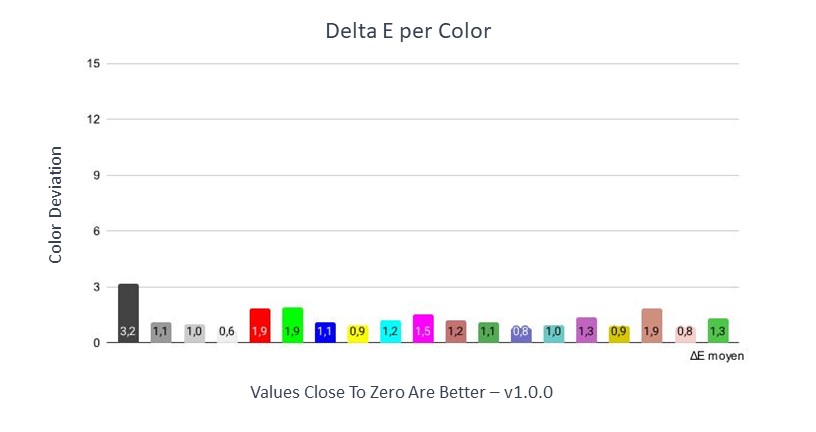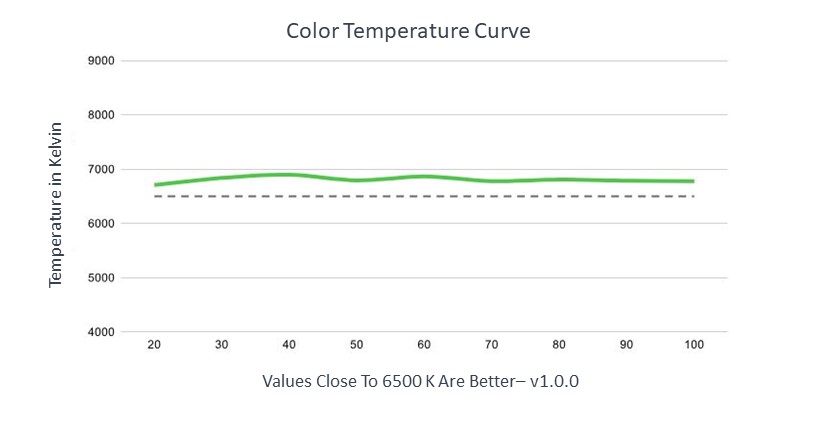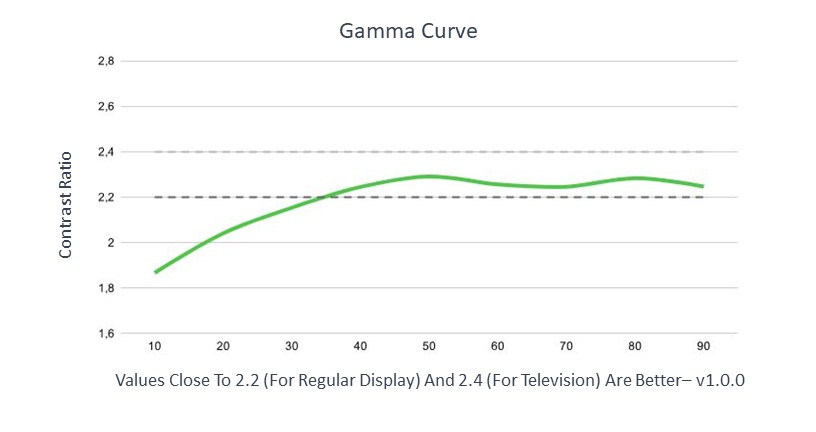The ASUS Zenbook 14 OLED is Asus’s inaugural laptop featuring an Intel Core Ultra processor built on the Meteor Lake architecture. It boasts an ultra-thin chassis complemented by a 14-inch OLED screen, presenting itself as a versatile machine.
Introduction
The Zenbook 14 OLED (UX3405MA) isn’t a new chassis; we encountered it upon its release in May 2022. Its primary purpose lies in allowing Asus to market a laptop model immediately following the Intel Core Ultra announcement. The significant novelty here is the integration of an Intel Core Ultra 7 155H, proudly initiating the new Meteor Lake architecture. This laptop also benefits from a 120 Hz touch-enabled OLED screen. An upgrade from the previous 90 Hz, and VRR (Variable Refresh Rate) compatibility in Windows. Notable changes include modifications to the hinge and the disappearance of the fingerprint reader in the power button, replaced by a Windows Hello-compatible webcam.

Pricing
The Zenbook 14 OLED is expected to be available with a Core Ultra 5 chip, 16GB RAM, and 512GB storage for $1299 in early 2024.
Read Also: ASUS Zenbook 14X OLED: A Laptop That Nails Design And Multimedia | Deep Insights
Technical Specification of ASUS Zenbook 14 OLED
| Specifications | Details |
| Screen diagonal | 14 inches |
| Screen resolution | 2880 x 1800 |
| Dimensions | 313 x 220 x 16.9 mm |
| Weight | 1280 g |
| Processor | Intel Core Ultra 7 155H |
| RAM | 32 GB |
| Graphics card | Intel Arc 8-core Xe |
| Operating system | Windows |
| Panel | OLED |
| Screen glossiness | Glossy |
| Touchscreen | No |
| Hybrid | Yes |
| Ports | 0 x USB-C, 1 x USB-A, 1 x HDMI, x DisplayPort, 0 x Ethernet, 0 x SD card reader, 0 x microSD card reader, 1 x Headphone output, 0 x Microphone input |
| Cooling | Fan |
Build Quality
Encased in an aluminum chassis adorned with a stylized ‘A’ on the lid. The Zenbook 14 OLED lacks the Plasma Ceramic finish of the Zenbook S 13 OLED (73334), thus being prone to fingerprints.

Upon opening the lid, the sleek integration of the touch-enabled OLED screen becomes evident, featuring relatively slim bezels, occupying 87% of the total surface. The black-backlit keyboard offers three levels of illumination, providing a satisfying typing experience. The glass touchpad allows smooth navigation and supports Asus’s Numpad function, displaying a numeric pad upon holding the upper-left corner for more than a second.

The connectivity, predominantly on the right side, includes two Thunderbolt 4 ports, an HDMI, and a headphone jack. Despite the ample ports, once the power supply, secondary screen, and external SSD are connected, space for the right hand and an additional mouse becomes limited. The left side houses only one USB port (5 Gb/s) with the remaining space dedicated to ventilation.

Connectivity and Performance
The connectivity options include Wi-Fi 6E and Bluetooth 5.3, as Wi-Fi 7 remains unavailable for laptops. The 1080p webcam exhibits noticeable grain even in decent lighting. Activating Windows Studio Effects, facilitated by an NPU managing AI within the Core Ultra, enables automatic framing, eye tracking, and background blur. However, despite utilizing 27% NPU load without engaging the CPU cores, the enhancement in output remains minimal.
Read Also: ASUS Vivobook Go 14 (E1404F): A New Standard For Thin And Light
The Zenbook 14 OLED’s cooling system has been revamped with dual vents: one beneath the hinge and another on the PC’s left edge. Internally, a heat pipe transfers processor-generated heat to two radiators, where one fan expels the hot air. Thermally, the laptop maintains itself well, with the keyboard area peaking at a comfortable 38°C. Except for the vents, the temperature remains relatively low.
Noise Levels and Performance
Under Balanced mode (default), the Zenbook 14 OLED maintains noise levels at 35.9 dB, producing a faint hum. Switching to Performance mode for enhanced graphics triggers an audible rise to 39.3 dB, considerably noticeable in an office setting but far from the noise levels of a gaming laptop (+/-48 dB).

Performance Benchmarks
The Zenbook 14 OLED (UM3405MA) provided by Asus is equipped with an Intel Core Ultra 7 155H, 32GB RAM, and a 1TB SSD. Benchmarking it across various software applications, it obtained a performance score of 124, positioning its processor between the Ryzen 7 7735U of the Zenbook 15 OLED and the Core i7-1360P of the Framework Laptop. In comparison, the Apple iMac M3 scored 130 in the same review.
Analyzing the Core Ultra 7 155H’s behavior during compression in HandBrake, initial operation frequencies for the P-Cores were observed at 2.93 GHz, and for the E-Cores at 2.61 GHz, within a 47W thermal envelope for the initial 40 seconds. Subsequently, the frequencies significantly dropped to 2 GHz and 1.52 GHz, stabilizing at 25W.
However, the laptop’s CPU performance falls somewhat short, closely resembling the Core i7-1360P despite hosting six performance cores and eight efficiency cores (plus two) compared to the former’s four performance cores and eight efficiency cores.
Graphics Performance and Storage
The GPU section, however, showcases a noticeable performance boost, detailed in a separate article. Reviewing Intel’s previous graphics prowess using Diablo 3 at maximum settings in Full HD resulted in 35 FPS. With the Core Ultra 7 155H and Intel Arc graphics, the average FPS rose to 71.

Additional gaming results in Full HD with preset settings at Low and without XeSS scaling unveiled varying outcomes.

Regarding storage, Asus opted for a Western Digital SN560 SSD, offering transfer rates of 4.9 GB/s read and 3.2 GB/s write speeds, ideal for Windows responsiveness and rapid video transfers via Thunderbolt 4

Display Quality of ASUS Zenbook 14 OLED
The 14-inch OLED screen, a Samsung model, showcases a resolution of 2880 x 1800 pixels and a refresh rate of up to 120 Hz, compatible with VRR. However, by default, it operates at 60 Hz, ensuring a less reflective touch screen with a glossy finish.
Color Accuracy and Brightness
Assessing the screen’s color accuracy using the sRGB profile in MyAsus software, the Zenbook 14 OLED registered a delta E of 1.3, below the threshold of 3, beyond which color deviations are visible to the naked eye. The color temperature measured at 6807 K, slightly higher than the video standard, posing minimal hindrance. True to OLED nature, the contrast is nearly infinite, delivering perfect blacks, and imperceptible motion blur.

Brightness and Reflection
At a peak brightness of 371 cd/m², it struggles against the screen’s reflective nature, which bounces back 45% of the light. Outdoor or heavily lit environments may hinder the Zenbook 14 OLED’s usage.



ASUS Zenbook 14 OLED Audio Performance
Housing two downward-facing speakers, the sound quality depends on the surface the laptop rests on. At higher volumes, the audio becomes muddy, showcasing noticeable saturation. Reducing the volume results in an overall lack of bass and precision.

Optimizing the audio through Dolby Access with a custom profile, disabling the Surround Virtualizer and volume equalizer, yields a more neutral output. The headphone output boasts good characteristics, offering high dynamics and low distortion, limited only by its slightly lower output level suitable for low impedance headsets.
| Specifications | ASUS ZENBOOK 14 OLED MTL | AVERAGE OF PCs Reviewed |
| Output level | 125 mVRMS | 167 mVRMS |
| Distortion + noise | 0.03% | 0.016% |
| Dynamic range | 93 dB | 99 dB |
| Crosstalk | -62 dB | -63 dB |
ASUS Zenbook 14 OLED Portability and Battery Life
Measuring 31.2 x 22 cm with a thickness of 1.49 cm, the Zenbook 14 OLED Meteor Lake weighs 1.28 kg, accompanied by a compact 65W charger weighing 226 g. It’s a portable option, easily fitting into bags.

Expectations for battery life were high; however, the 75Wh battery sustained precisely 9 hours and 24 minutes under regular usage (Netflix via Chrome, screen at 200 cd/m², 50% headphone volume, keyboard backlight off, and Bluetooth disabled). This is an improvement of 36 minutes compared to the Core i7-1260P Zenbook 14 OLED but only a 7% progression, contrary to Intel’s anticipated 20 to 25% in video playback.

Repairability
Accessing the ZenBook 14 OLED’s components involves removing seven Torx screws and unclipping the firmly secured casing. Internally, only the SSD and the battery are removable, as the Wi-Fi card and RAM are soldered. Despite the soldered elements, Asus claims a repairability index of 8.3/10, indicating relatively high serviceability.

Pros and Cons of ASUS Zenbook 14 OLED
Pros
- Well-calibrated display.
- Build quality.
- Decent battery life.
- Versatility of the processor.
Cons
- Highly reflective screen.
- USB port placement.
- Mediocre webcam.
- Fingerprint smudges.
- Absence of a fingerprint reader.
ASUS Zenbook 14 OLED Review Conclusion
The Zenbook 14 OLED proudly introduces the Intel Core Ultra processor, serving as its flagship showcase. Despite the excessive reflections on the OLED screen, its visual appeal remains intact. The versatility of the Core Ultra 7’s performance allows for occasional gaming pursuits. However, the predominantly right-side positioning of most ports won’t favor right-handed users.
Read Also:
Review Of ASUS ROG Strix Scar 18 (RTX 4080): Bigger And Better Than Ever





